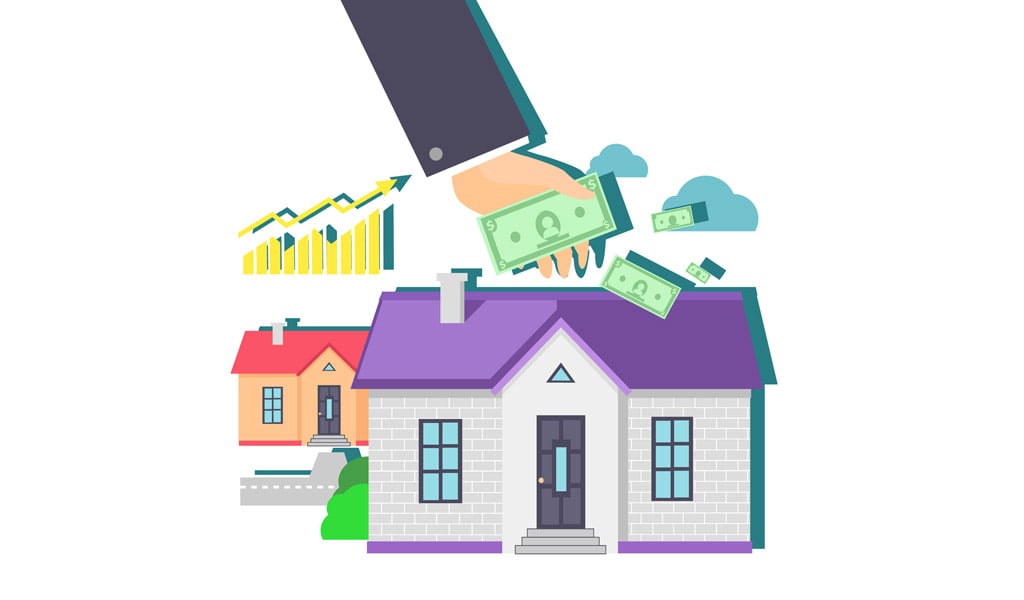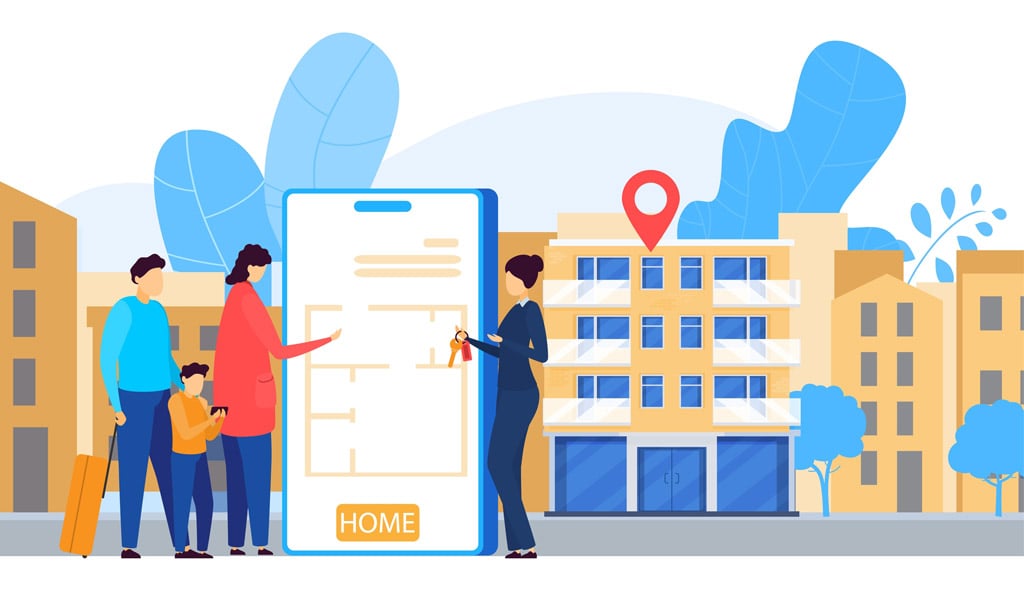
Customer experience is already a top focus for most industries, transforming interactions between buyers and sellers for many products and services. We’ve recently seen a distinct shift towards crafting excellent customer experiences in the real estate sector. Buyer expectations and behavior are shifting, and this change looks to be permanent. In 2019, 52% of property buyers found the home they purchased on the internet, while only 5% found a home by talking to a friend, relative, or neighbor. Digitization has transformed the way we buy and sell properties.
The Shift Towards Customer Experience
The shift towards customer experience in the real estate sector didn’t happen overnight. As a traditional industry, real estate was slower to adapt and adopt new technology. We see this with many other traditional industries like banking, finance, and healthcare. These industries often have a rigid and heavily ingrained way of doing things and are cautious of taking risks or implementing dramatic change. This happens for many reasons:
- Businesses within traditional industries have often existed for a long time and have lots of legacy technology that can’t be easily replaced.
- Customer experiences with the industry are homogenized. Customers know what to expect, so companies feel compelled not to be too different from their competitors.
- The industry is often subject to a lot of regulation and compliance, making companies wary of trying something new. Companies might worry they will be non-compliant if they take a different approach.
However, while traditional industries plod along, other sectors are rapidly evolving. They adopt new technologies like AI and automation, move everything online, offer personalized digital experiences, and offer more choices. This has now happened across the board, and the result is changing customer expectations. Customers today expect to be able to communicate, buy, and troubleshoot online. They expect fast responses, personalized offers, and experiences. And they expect to choose when and how they interact with the companies they do business with. The real estate industry had to adapt – and they have!
The Modern Real Estate Company
In our tips section, we’re doing to dive into the specifics of how to craft an excellent customer experience in the real estate sector. But in this section, we thought it would be a good idea to highlight some of the other ways that real estate companies have adapted to the digital age by adopting innovative technologies.
Image recognition, computer vision, and tagging
Some software can now detect objects within an image using this data to add to the property description, page metadata, etc. For example, let’s say a user or real estate agent is creating a listing for a property that has just gone on the market. They upload 15 images as part of the listing. In one of the photos, you can clearly see a renovated kitchen. In another picture, you can see a modern bathroom with both a bath and a separate shower. In yet another photo, you can see a wood-burning fire.
The software will automatically detect these features and add the information to the description. The tagging also makes it possible for users to search for “2 bedroom properties with modern bathrooms.”
Personalized Search Recommendations
Some real estate companies are now using software that will learn user preferences and email them personalized recommendations. This goes beyond basic requirements like price range and into more specific wants. For example, if the user continually clicks on listings for new builds, the algorithm will learn that they are probably looking for a new build property. Suppose the user never or barely ever clicks on ‘fixer-upper’ properties. In that case, the algorithm can determine that they probably want somewhere they can just move into without doing much work on the property.

7 Tips and Tactics for Providing Excellent Customer Experiences in Real Estate
1. Identify Where There is Friction on Your Website
One of the sure-fire ways to provide a bad customer experience is to have a clunky and unresponsive website with lots of friction. Friction is anything that prevents your customers from achieving their goals.
Example goal: I want to use this website to find a property I like and hopefully book a viewing for next week.
Here are some examples of friction that could get in their way:
- Distracting visuals or visually cluttered page – Too much going on on one page. Crowded graphics. Jarring colors that don’t work well together.
- Inconsistencies – When the property listing doesn’t match the photos. This can lead to confusion.
- Unnecessary actions – Too many steps to complete activities. For example, having to go through multiple pages to get to what they want.
Solutions to Friction
The goal here is to eliminate friction wherever possible. Let’s take the friction “unnecessary actions.” The customer might be on the search results page and see a property that has captured their interest. They want to look at the photos but don’t want to be taken off the main page. Instead of making them click on the listing to see more images, you can have a scrolling photo block within the listing’s preview. That way, the customer can see whether they like the look of the property and want to click through to get more details like local schools, the detailed floor plan, and more.
2. Adapt to Demographics
Did you know that millennials make up 66% of first time home buyers? And while 52% of people search for their property online, 99% of millennials use the internet to research properties. If you want to attract millennial buyers, then you need to provide information in the way they want to consume it. This means using Social Media and popular messaging platforms like WhatsApp and Facebook Messenger.
Using these services isn’t just about attracting millennials (or any other demographic), but also actioning other parts of the buying process. For example, you can use WhatsApp for customer service, allowing customers to book appointments with estate agents or property viewings.
3. The Omnichannel Experience
There has been a massive focus across industries on omnichannel experiences over the last few years. The real estate industry is no exception here, but they are in a unique position. Many real estate companies have been slow to adopt an omnichannel approach, so the sooner you do it, the quicker you will stand out from your competitors.
What does omnichannel look like for real estate:
- Self-service – Having a detailed knowledgebase, FAQ, Case Studies, etc., on your website. Many customers prefer to find the answer themselves rather than talking to someone from the company. Additionally, making the information customers need easily accessible will give them more confidence in choosing you.
- Cross-platform – For example, websites, mobile apps, and in-person (walk-in) options.
- Multiple communication options – Chatbots, Live Chat, WhatsApp, Contact forms, email.
The key to success for omnichannel is providing a consistent experience across channels. To do this, agents must be able to switch from one channel to another with the customer information following them.

4. Build Strong Relationships
Real estate requires a lot of back and forth between buyers and agents. It’s not like retail, where the customer might add an item to their shopping cart and buy it 2 minutes later, for it to arrive on their doorstep in 2 days. Buying and selling properties can take weeks to months. And with large amounts of money changing hands, and for such a life-impacting purchase (often where you will be spending every day of your life for the foreseeable future), lots of questions and communication is expected.
Customer service is vital in any industry, but building strong relationships is especially crucial in real estate. Remember, as a real estate agent or company; you’re now a key player in your customer’s major life event. This is a big deal!
Here are some tips for building strong relationships in real estate:
- Over-communicate – Too little communication is much worse than too much communication. Try to strike up a rapport with clients over informal communication channels like WhatsApp. Conversation flows much more freely on messaging platforms than over email or quick phone calls.
- Be available – Let clients know when they can expect responses to their queries. If they contact you out of hours, use carefully crafted automated responses or direct them to a chatbot for simple questions.
- Always be honest – Honestly, about the property and the process helps build trust and strengthen relationships.
5. Utilize Automation and AI
If you’re not always using automation and AI, now is the time. Automation and AI helps to streamline customer experiences, improve business efficiency, and reduce costs.
Here are some examples of automation and AI in real estate:
- Smart inboxes – Smart inboxes allow you to tag, filter, prioritize, hide, or highlight the work that’s important to you. This means you’ll never miss a customer email, WhatsApp message, or other communication.
- Canned responses – You can create a multitude of canned responses for every situation to help advance customer communication without lifting a finger. Canned responses, when done well, can improve interactions. They ensure that you also relay the right information and make no mistakes.
- Automated duplicate detection – Sometimes, property listings are posted multiple times. Leaving duplicates on your site can harm your SEO and decrease traffic.
6. Reduce Response Times
Long response times are a killer for customer experience. When customers have to wait, most of them simply give up. They move onto the next company. That company might respond faster and snap that customer up while you’re getting around to sending an email.
What do real estate customers want?
They want speed, efficiency, and convenience. They want to find the perfect property quickly, without much work on their end, and they want the end to end process to be straightforward.
How to reduce response times
It’s really about ensuring you’re well connected and have a robust overview of all channels. You shouldn’t have to switch between apps to check whether the client has responded – this is a recipe for missing a crucial message. All communications should happen in one place. All emails, live chat, chatbot logs, WhatsApp messages, and calls should be accessible from one platform.
And we’ll repeat it – use canned responses for when you can’t reply in person. Providing an initial response quickly is an essential part of delivering superior customer experiences.
7. Make Sure Your Website is Up to Date
Sometimes, we forget to update our website. Other times, we add new information to the website but keep old information hanging around. You can never be sure that customers will always find updated information. If you fail to update your website, you can leave customers finding incorrect information. They might become confused or ask for services that you no longer offer and then get disappointed or feel they’ve wasted their time.
How to make sure your website content is geared towards great customer experience:
- Always date blogs – Blogs can be a great snapshot of the industry or your company at that moment in time. They can provide lots of detailed information to customers, drive traffic, and spark discussions on social media. However, if your blog is talking about how solar panels might start appearing on houses in the next decade, and there’s no date on your blog, readers will be confused or think you don’t know what you’re talking about – solar panels have been around for years at this point.
- Update knowledgebases – You don’t have to update every blog to reflect the industry or your company’s changes. That would be ludicrous. A simple date will suffice because it says “this was true at the time of publishing”. However, knowledgebases should always reflect the most current information in your company. This means all short customer-focused FAQ or self-service content.